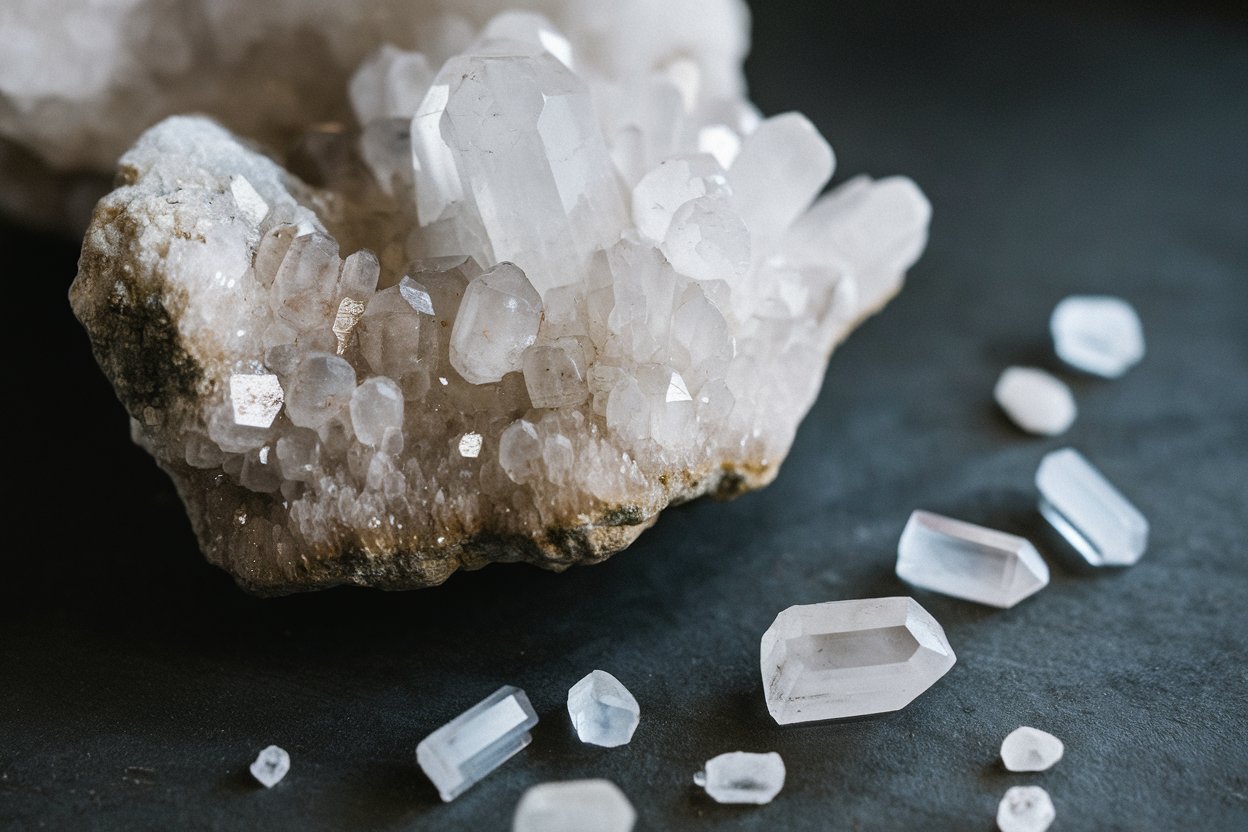
What is Indium(III) Fluoride? Indium(III) Fluoride, or InF3, is a chemical compound made of indium and fluorine. This white, crystalline solid is known for its high melting point and unique properties. Used in various industries, it plays a role in optics, electronics, and even in the production of certain glasses. Its ability to conduct electricity while remaining transparent makes it valuable in specialized applications. Curious about its other uses or how it's made? Stick around as we dive into 25 intriguing facts about Indium(III) Fluoride that will expand your knowledge and maybe even spark a new interest!
Key Takeaways:
- Indium(III) fluoride, a white solid, is used in catalysts, optical coatings, and electronics. It has a high melting point and is toxic if ingested, requiring careful handling and storage.
- Discovered in 1863, indium(III) fluoride has ionic bonding and is sparingly soluble in water. It's named after its unique spectral line and is found in zinc ores.
What is Indium(III) Fluoride?
Indium(III) fluoride, also known as indium trifluoride, is a chemical compound with the formula InF₃. It is a white, crystalline solid that is used in various industrial applications. Let's dive into some fascinating facts about this compound.
-
Chemical Formula: The chemical formula for indium(III) fluoride is InF₃. This indicates it contains one indium atom and three fluorine atoms.
-
Appearance: Indium(III) fluoride appears as a white, crystalline solid. Its crystalline structure gives it a unique appearance.
-
Molar Mass: The molar mass of indium(III) fluoride is approximately 171.82 grams per mole. This is calculated by adding the atomic masses of indium and fluorine.
-
Melting Point: Indium(III) fluoride has a melting point of about 1170°C (2138°F). This high melting point makes it suitable for high-temperature applications.
-
Boiling Point: The boiling point of indium(III) fluoride is around 1500°C (2732°F). It remains stable at very high temperatures.
Uses of Indium(III) Fluoride
Indium(III) fluoride has various applications in different industries. Here are some of its primary uses:
-
Catalyst: It is used as a catalyst in organic synthesis. Catalysts speed up chemical reactions without being consumed in the process.
-
Optical Coatings: Indium(III) fluoride is used in optical coatings. These coatings improve the performance of lenses and other optical devices.
-
Glass Manufacturing: It is used in the production of special glasses. These glasses have unique properties, such as high refractive indices.
-
Electronics: Indium(III) fluoride is used in the electronics industry. It is used in the manufacture of semiconductors and other electronic components.
-
Ceramics: It is used in the production of ceramics. Ceramics made with indium(III) fluoride have enhanced properties.
Chemical Properties of Indium(III) Fluoride
Understanding the chemical properties of indium(III) fluoride helps in its various applications. Here are some key chemical properties:
-
Solubility: Indium(III) fluoride is sparingly soluble in water. This means it does not dissolve easily in water.
-
Reactivity: It reacts with strong acids. This reaction can produce indium salts and hydrogen fluoride gas.
-
Stability: Indium(III) fluoride is stable under normal conditions. It does not decompose easily.
-
Oxidation State: Indium in indium(III) fluoride has an oxidation state of +3. This is the most stable oxidation state for indium.
-
Bonding: The bonding in indium(III) fluoride is ionic. This means it is formed by the transfer of electrons from indium to fluorine.
Safety and Handling of Indium(III) Fluoride
Safety is crucial when handling chemical compounds. Here are some safety facts about indium(III) fluoride:
-
Toxicity: Indium(III) fluoride is toxic if ingested. It can cause severe health issues if swallowed.
-
Skin Contact: It can cause skin irritation. Protective gloves should be worn when handling it.
-
Eye Contact: Indium(III) fluoride can cause eye irritation. Safety goggles are recommended to protect the eyes.
-
Inhalation: Inhaling indium(III) fluoride dust can cause respiratory issues. A mask should be worn to prevent inhalation.
-
Storage: It should be stored in a cool, dry place. Proper storage prevents it from reacting with moisture or other chemicals.
Interesting Facts about Indium(III) Fluoride
Here are some additional interesting facts about indium(III) fluoride that you might find intriguing:
-
Discovery: Indium was discovered in 1863 by Ferdinand Reich and Hieronymous Theodor Richter. Indium(III) fluoride was later synthesized from indium.
-
Name Origin: The name "indium" comes from the indigo blue line in its spectrum. This unique spectral line led to its discovery.
-
Natural Occurrence: Indium is a rare element in the Earth's crust. It is usually found in zinc ores.
-
Industrial Production: Indium(III) fluoride is produced industrially by reacting indium with fluorine gas. This reaction is carried out under controlled conditions.
-
Research: Ongoing research is exploring new applications for indium(III) fluoride. Scientists are continually finding innovative uses for this versatile compound.
Indium(III) Fluoride: A Quick Recap
Indium(III) Fluoride, a compound with the formula InF3, stands out for its unique properties and applications. This white, crystalline solid is used in optical coatings, fluorine-doped tin oxide (FTO) coatings, and even in nuclear reactors. Its ability to withstand high temperatures and resist corrosion makes it invaluable in various industries. Despite its niche uses, understanding InF3 can offer insights into advanced material science and chemistry.
From its role in semiconductors to its use in specialized glass, Indium(III) Fluoride proves to be a versatile material. Whether you're a student, a professional, or just curious, knowing these facts can broaden your knowledge about this fascinating compound. Keep exploring, and who knows what other intriguing materials you'll uncover next!
Frequently Asked Questions
Was this page helpful?
Our commitment to delivering trustworthy and engaging content is at the heart of what we do. Each fact on our site is contributed by real users like you, bringing a wealth of diverse insights and information. To ensure the highest standards of accuracy and reliability, our dedicated editors meticulously review each submission. This process guarantees that the facts we share are not only fascinating but also credible. Trust in our commitment to quality and authenticity as you explore and learn with us.
